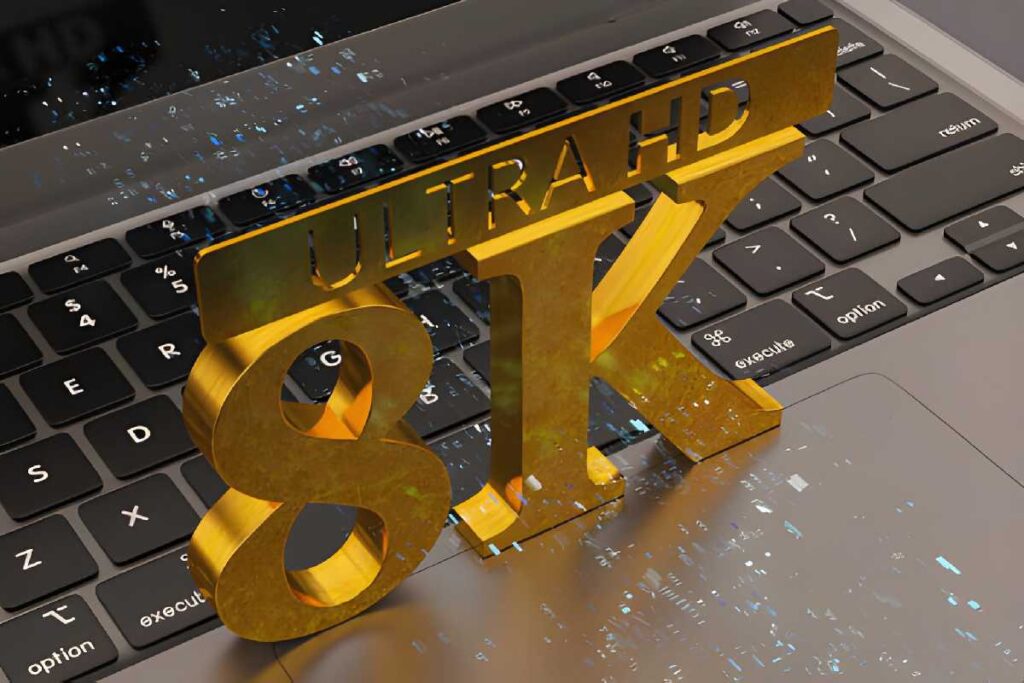Look, I get it. You’re searching for 8k video ultra hd 120fps download free because you want that buttery-smooth, insanely crisp footage for your project without emptying your wallet. I’ve been down this rabbit hole myself, and honestly? It’s more complicated than it seems at first glance.
Let me walk you through everything I’ve learned about finding, downloading, and actually using 8K ultra HD footage at 120fps—without the usual marketing nonsense or overpromising.
Why Everyone’s Obsessed with 8K 120fps Footage Right Now
Here’s the thing: 8K video at 120 frames per second is basically the holy grail of video content right now. We’re talking about resolution that’s four times sharper than 4K (that’s 7680 x 4320 pixels, by the way), combined with frame rates so smooth they make regular 30fps footage look like a slideshow.
I remember the first time I saw true 8K 120fps footage on a proper display. It was like seeing the world through a window instead of a screen. Every tiny detail popped, and motion was so fluid it felt surreal.
But here’s what nobody tells you upfront: this level of quality comes with some serious baggage.
The Brutal Truth About Free 8K Ultra HD Downloads
Let’s address the elephant in the room. When you’re hunting for free 8K video downloads, you need to understand what you’re actually getting into:
The file sizes are absolutely massive. I’m talking 50GB to 100GB+ for just a few minutes of footage. My first 8K download took literally overnight on my decent internet connection, and it ate up almost my entire free cloud storage.
Your computer might actually cry. Editing 8K footage at high frame rates requires serious horsepower. We’re talking:
- High-end graphics cards (RTX 4070 or better)
- At least 32GB of RAM (64GB if you’re serious)
- Fast NVMe SSD storage
- Modern processors (i7/i9 or Ryzen 7/9)
I learned this the hard way when my mid-range setup basically froze trying to preview a 10-second 8K clip.
Where to Actually Find Legitimate Free 8K Video Content
After months of searching and testing, here are the platforms that actually deliver on their promises:
Pixabay: The Reliable Starting Point
Pixabay has been my go-to for years. They’ve got a growing collection of high-resolution video footage that includes some 8K content. Not everything is 120fps (most tops out at 60fps), but the quality is consistently good.
The best part? Truly free with no attribution required. I’ve used their footage in commercial projects without any issues.
Pexels Videos: Quality Over Quantity
Pexels curates their library really well. Their ultra HD video collection is smaller than Pixabay’s, but every clip feels purposeful. They’re gradually adding more 8K content, and their search filters actually work properly.
Pro tip: Use their “popular” filter to find the clips that other creators are gravitating toward. Usually means better production value.
Videvo: The Hidden Gem
Videvo flies under the radar, but they’ve got some seriously impressive free stock footage in their library. Mix of free and paid content, but you can filter for completely free downloads. Their 4K collection is more robust than 8K, but worth checking regularly.
YouTube: Unconventional But Useful
Here’s something most people don’t think about: YouTube has tons of 8K test footage and demo videos uploaded by camera manufacturers and tech reviewers. While you can’t directly download for commercial use, many creators offer download links in their descriptions for testing purposes.
I’ve used 4K Video Downloader (the free version) to grab some of these for personal projects and screen calibration.
Understanding Frame Rates: Why 120fps Matters (And When It Doesn’t)
Let me break down something that confused me for months: high frame rate video isn’t always better.
120fps shines when you’re capturing:
- Fast action and sports
- Slow-motion sequences (you can slow down to 25% speed and still have buttery 30fps)
- Gaming content
- Smooth panning shots
- Wildlife and nature scenes with movement
But for talking heads, interviews, or cinematic narrative work? Honestly, 24fps or 30fps often looks more natural and “filmic.” I’ve shot comparison footage, and most viewers couldn’t tell the difference in static scenes.
Plus, higher frame rates mean exponentially larger files and more demanding editing workflows.
The Technical Side: Codecs, Bitrates, and What Actually Matters
This part used to make my head spin, but it’s actually pretty straightforward once you get it.
H.265 (HEVC) is your friend for 8K footage. It compresses files way better than older H.264 without losing quality. A 10-minute 8K 60fps video in H.265 might be 30GB, while the same in H.264 could hit 80GB+.
Bitrate is the real quality indicator. For genuine 8K ultra HD, you want at least:
- 100 Mbps for 30fps
- 150-200 Mbps for 60fps
- 250+ Mbps for 120fps
Anything lower and you’re not getting true 8K quality—just upscaled 4K pretending to be 8K.
How I Actually Use Free 8K Footage in Real Projects
Here’s my honest workflow, because theory is useless without practical application:
Start with proxies. I create 1080p or 4K proxy files immediately. Trying to edit native 8K is like running in quicksand. Adobe Premiere and DaVinci Resolve both handle proxy workflows brilliantly.
Downscale for delivery. Most of my final exports are 4K or even 1080p. But starting with 8K gives me incredible flexibility for cropping, zooming, and stabilization in post without losing quality.
Strategic slow-motion. This is where 120fps really pays off. I’ll shoot B-roll at 120fps, then slow it down to 30% speed for those dramatic slow-mo moments that make content pop.
Mix and match frame rates. My timeline is usually 24fps or 30fps, but I’ll drop in 60fps or 120fps clips and let the editing software interpret them. Creates that dreamy, smooth look for specific shots.
The Free vs. Paid Dilemma: When to Actually Spend Money
I’ve been on both sides of this. Started completely free, now I have subscriptions to paid stock sites. Here’s my take:
Stick with free when:
- You’re learning and experimenting
- Creating personal projects or portfolio pieces
- Need generic B-roll (nature, cityscapes, textures)
- Working with tiny or non-existent budgets
Consider paid options when:
- You need specific, unique footage that free sites don’t have
- Working on commercial projects with real budgets
- Time is more valuable than money (paid sites have better search and organization)
- You need extended licenses for broadcast or large-scale distribution
I use Artgrid for client work now, but I still hit up the free sites for personal projects and quick fillers.
Common Mistakes That’ll Waste Your Time (I Made Them All)
Downloading everything “just in case.” I filled three external hard drives with footage I never used. Now I only download what I need for specific projects.
Ignoring licensing terms. Even “free” footage has rules. Some require attribution, others restrict commercial use. Reading the fine print saved me from a potential legal headache once.
Assuming 8K automatically means better. I’ve seen gorgeous 4K footage that destroys poorly-shot 8K content. Resolution isn’t everything—lighting, composition, and color grading matter way more.
Not organizing downloads. Create a system immediately. I use folders by category, resolution, and frame rate. Future you will be incredibly grateful.
The Storage and Backup Reality Check
Nobody talks about this enough: 8K video will devour your storage faster than you can imagine.
My current setup:
- 2TB NVMe SSD for active projects
- 8TB external HDD for archive
- Cloud backup (Backblaze) for finished projects
Even with this, I’m constantly managing space. A single 8K 120fps shoot can generate 500GB+ of footage easily.
Budget for storage before you go all-in on 8K. It’s not optional.
Future-Proofing: Is 8K Even Worth It Right Now?
Here’s my controversial opinion: for most creators, 8K is overkill in 2025.
YouTube supports it, but most viewers watch on phones or 1080p monitors. The percentage actually seeing your 8K quality? Tiny.
Where 8K makes sense:
- Digital cinema and theatrical releases
- High-end commercial work
- VFX plates that need massive cropping flexibility
- Archival footage meant to last decades
- Professional product demos and showcases
For YouTube creators, podcasters, social media content? 4K at 60fps is the sweet spot right now. Save yourself the storage headaches.
Wrapping This Up: Your Next Steps with 8K Video Ultra HD 120fps Download Free
Look, chasing 8k video ultra hd 120fps download free is a journey, not a destination. Start with the free platforms I mentioned—Pixabay, Pexels, and Videvo. Download a few test clips and see how your system handles them before committing to a full 8K workflow.
Focus on learning proper editing techniques, color grading, and storytelling first. Resolution and frame rate are tools, not magic bullets. I’ve seen creators make stunning content with 1080p phones and others produce boring garbage in 8K.
Test your hardware limitations, build your storage strategy, and gradually level up your toolkit as your skills and needs grow. The technology is incredible, but it’s just technology. Your creativity and vision matter infinitely more than the resolution counter.
And honestly? Most audiences care more about good stories and engaging content than whether your video is 4K or 8K. Keep that perspective, and you’ll do great.
Now go create something awesome—whatever resolution you choose.





